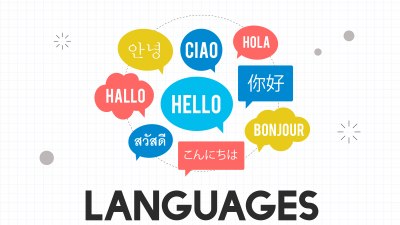When Google Translate Turns Dinner into a Science Experiment
Explore the humorous mishaps of using Google Translate for culinary adventures.

Image by rawpixel.com on Freepik
In our global society, communication has become easier than ever, thanks to technology. One of the most notable advancements is Google Translate, which allows individuals to communicate in various languages seamlessly. However, despite its powerful capabilities, Google Translate isn’t foolproof and can lead to some amusing—and sometimes baffling—results. One such area is cooking, where a simple recipe can turn into a hilarious science experiment when lost in translation.
Imagine you’re scrolling through a food blog, eagerly searching for that perfect dish to make for dinner. You find a recipe written in a foreign language, perhaps Italian or Japanese, and you decide to use Google Translate to decode it. At first, it seems like a problem that’s easily solved. You copy the text, paste it into the translation box, and click on ‘Translate.’ The result? A confusing assortment of culinary terms and phrases that might leave you more puzzled than informed.
One of the most entertaining aspects of this happens when you come across a simple dish, like “chicken curry.” You plug it into Google Translate, only to find it’s suddenly transformed into “bird meat stew with a hint of jungle spice.” While it may sound exotic, anyone who has actually cooked knows that the original dish was much simpler. This is the hallmark of poetic liberties taken by the translation algorithm.
Common Mishaps
The margin for error varies significantly, depending on both the language and the complexity of the dish. For instance, the translation for 'garlic' in some languages might come out as 'the essence of vampires,' throwing your entire culinary experience into the realm of the surreal. You find yourself wondering how much vampire essence you should add to the pot, not to mention where to draw the line on how many cloves to include.
Funny Ingredient Mix-Ups
There are certain ingredients that consistently confuse Google Translate. Take 'kale.' Sometimes it translates this leafy green into 'old lettuce,' which changes your health-conscious dish into something that sounds unappetizing. The result? Your guests might not be willing to partake after you explain that the salad they're about to eat is made with 'stale vegetation.'
Another common culprit is the translation of spices. What should be a straightforward 'cumin' may come out as 'ancient nutty powder from the sun,’ which raises more questions than it answers. This can lead to culinary experiments where the cooking process becomes far more complex than intended, blurring the line between dinner and a science experiment.
Measurements and Conversions
Conversions in Google Translate can also lead to ludicrous situations. If a recipe calls for ‘teaspoon’ and you get ‘witch's hat’ as your measurement unit, beware the brew you are conjuring. You could end up adding a far greater quantity than needed, leading to an unexpected flavor explosion. One wrong translation can turn a splash of vinegar into a gallon and transform your dinner into a dish fit only for a potion cauldron.
Cultural Nuances
Another layer of complexity arises from cultural differences in cooking terminology. In some cultures, a dish is traditionally named after its color or the method of cooking, leading to further confusion. For instance, 'red sauce' might not just translate to 'sauce that is red;' it could mean 'sauce of the fiery dragon fruit,' opening up a Pandora’s box of unexpected flavors.
Recipe Instructions Gone Awry
When it comes to directions, you might find instructions like, 'blend until smooth' twisted into 'agitate until a vortex forms.' Suddenly, the simple task of mixing ingredients feels more like creating a science project than preparing a meal. You may find yourself pondering how long a vortex needs to form before you achieve the perfect consistency.
The Fusion of Flavors
The amalgamation of different culinary cultures through Google Translate could lead to some unexpectedly delightful discoveries. One moment, you’re aiming for traditional pasta, and the next, you’re preparing a dish that involves a fusion twist of Asian flavors that you never even intended. You crop an Italian dish only for Google Translate to guide you towards adding soy sauce along with your parmesan cheese, which could either be a culinary masterpiece or a culinary disaster.
Learning From Experience
While Google Translate can certainly create amusing cooking adventures, it also offers valuable lessons. One might discover that taking the time to familiarize oneself with common terms in another language can lead to a more enriching cooking experience. Instead of relying solely on technology, you can embrace the world of cuisine by learning essential words in different languages. This allows for a deeper connection to the foods being prepared and might even re-inspire a love for cooking.
Cooking Classes and Resources
Additionally, if you're looking for more structured guidance, consider enrolling in international cooking classes. Not only do they help bridge the language gap, but they also provide firsthand experience in various cuisine styles. Many cooking schools offer classes that focus specifically on translating traditional recipes into approachable steps, which can drastically reduce errors caused by automated tools.
Embrace the Chaos
In the end, using Google Translate in our culinary adventures may turn dinner into an amusing science experiment, but it is also a testament to the creativity that can arise from such experiences. With a little humor and a willingness to explore the unknown, couples cooking can lead to new traditions, memories, and perhaps a few unforgettable stories to share. So, the next time you decide to cook from a recipe in a different language, embrace the chaos, keep your sense of humor at the ready, and accept that dinner might just turn out to be a little more experimental than you anticipated.











